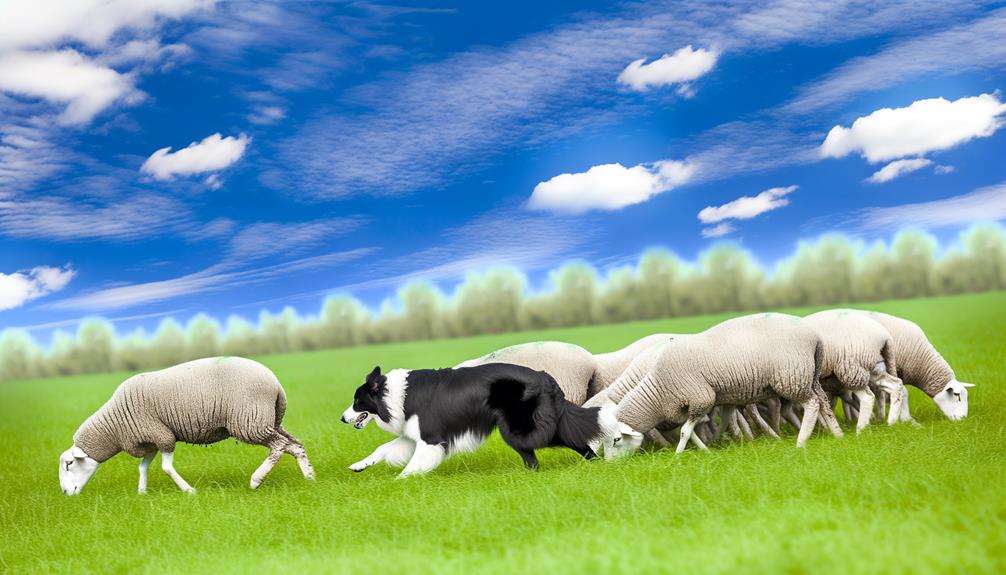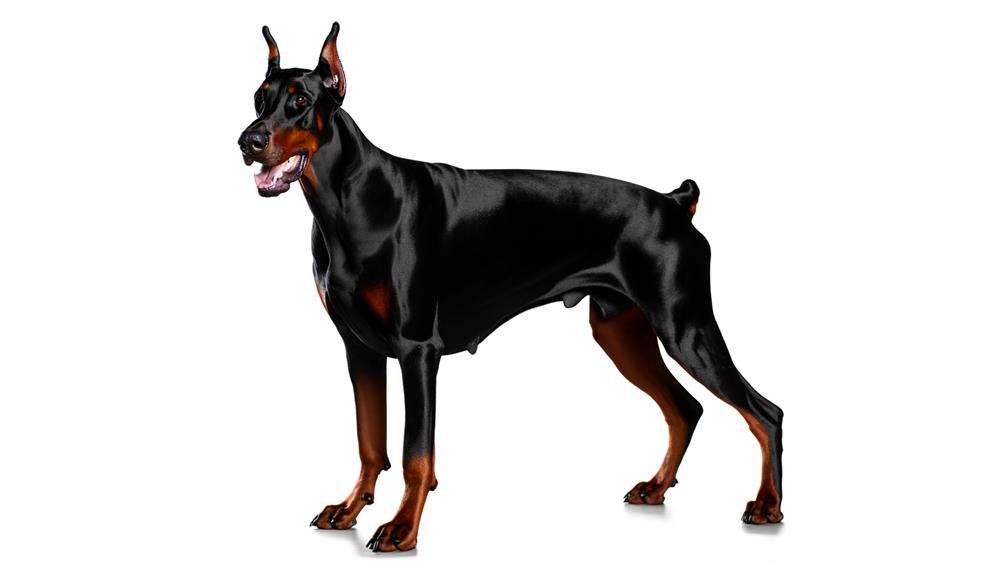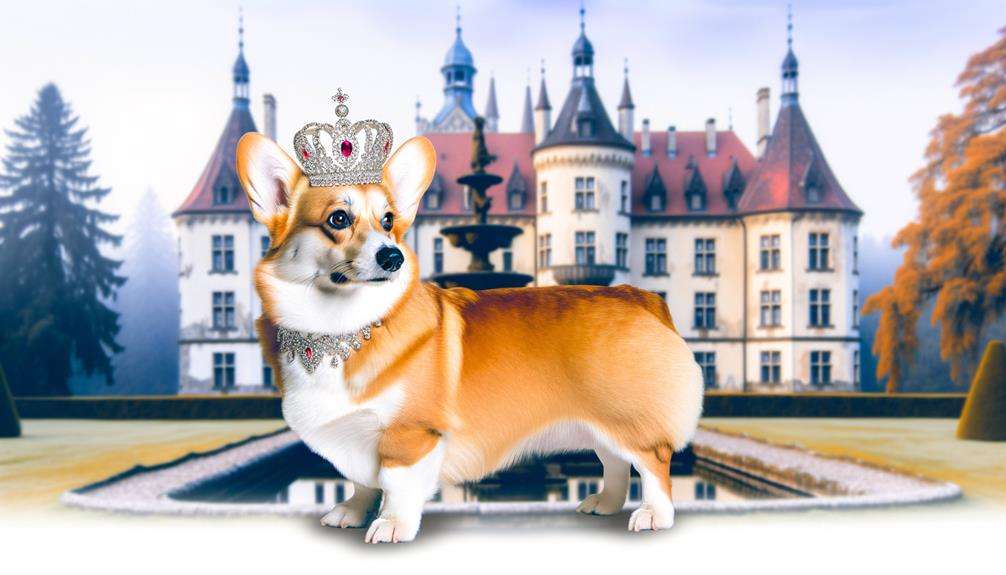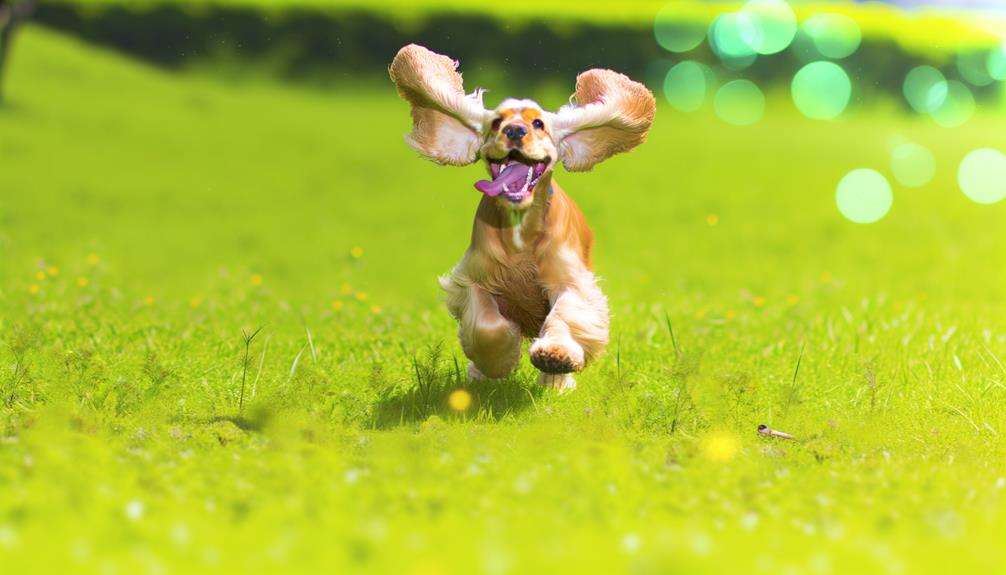If you're a first-time dog owner and you're considering a larger breed, you've come to the right place.
In this article, we'll introduce you to 11 top large dog breeds that are perfect for first-time owners like yourself.
From the friendly and loyal Golden Retriever to the intelligent and versatile German Shepherd, we'll help you find the perfect furry companion that suits your lifestyle and preferences.
Let's dive in and discover which breed is the right fit for you!
Key Takeaways
- Golden Retrievers and Labrador Retrievers are both friendly and adaptable breeds that are great for first-time owners. They have lovable characteristics, are calm and patient, and are good with children and other pets.
- German Shepherds and Boxers are large breeds with specific temperament and training needs. German Shepherds are loyal and intelligent, while Boxers are friendly and playful. Both breeds require regular exercise and mental stimulation.
- Saint Bernards and Bernese Mountain Dogs have gentle and easygoing temperaments. They are friendly, patient, and gentle with children and other pets. Both breeds require regular exercise and positive reinforcement training.
- Rottweilers and Bullmastiffs have strong protective instincts. While they can be loyal and protective, they need consistent and firm training and socialization. Regular exercise is important to keep them physically and mentally stimulated.
Golden Retriever
If you're a first-time dog owner looking for a large and friendly companion, consider the Golden Retriever. This breed is known for its lovable characteristics and temperament, making it a popular choice for families and individuals alike.
Golden Retrievers are typically friendly, intelligent, and eager to please, making them easy to train and a joy to have around. They've a calm and patient nature, which makes them great with children and other pets.
In terms of exercise and training needs, Golden Retrievers are an active breed that requires regular physical activity to keep them happy and healthy. Daily walks, playtime, and mental stimulation are important to prevent boredom and destructive behavior. They also excel in activities such as obedience training, agility, and retrieving games. Their intelligence and willingness to please make them highly trainable and adaptable to various training methods.
Labrador Retriever
Consider getting a Labrador Retriever as your first-time dog if you want a friendly and adaptable companion. Labradors are known for their loving and gentle nature, making them great family pets. Here are some key characteristics and temperament traits of Labrador Retrievers:
- Sociable: Labradors are highly sociable dogs that love being around people and other animals. They're great with children and make excellent playmates.
- Intelligent: Labrador Retrievers are highly intelligent and eager to please. This makes them easy to train and they excel in obedience and agility competitions.
When it comes to exercise and training needs, Labrador Retrievers have specific requirements:
- Exercise: Labradors are energetic dogs that require regular exercise to keep them mentally and physically stimulated. Daily walks, playtime, and activities like swimming or fetching are important to prevent boredom and maintain their overall health.
- Training: Due to their intelligence and willingness to please, Labradors are relatively easy to train. Basic obedience training and positive reinforcement techniques work well with them. Consistency and patience are key to ensuring successful training sessions.
German Shepherd
The German Shepherd is a loyal and intelligent large dog breed that can be a great choice for first-time owners. Known for their versatility and trainability, German Shepherds are often used as working dogs in various fields such as law enforcement and search and rescue. They've strong protective instincts, making them excellent guard dogs.
In terms of characteristics and temperament, German Shepherds are confident, courageous, and highly adaptable. They're known for their loyalty and devotion to their families, making them excellent companions and protectors. However, it's important to note that they can be reserved and cautious around strangers, which makes early socialization crucial for their development.
In order to keep a German Shepherd happy and healthy, regular exercise is essential. They're an active breed that thrives on physical and mental stimulation. Daily walks, playtime, and engaging in activities such as obedience training or agility can help meet their exercise needs.
Speaking of training, German Shepherds are highly intelligent and eager to please. They excel in obedience training and can learn commands quickly. Consistent and positive reinforcement-based training methods work best for this breed.
Boxer
Now let's delve into the Boxer, another large dog breed that, like the German Shepherd, is a great choice for first-time owners. Boxers are known for their friendly and playful nature, making them excellent companions for families and individuals alike. Here are some key characteristics and temperament traits of Boxers that you should know:
- Energetic and Lively: Boxers are full of energy and love to play. They'll keep you entertained with their playful antics and enthusiasm.
- Protective and Loyal: Boxers are known for their loyalty and protective nature. They make excellent watchdogs and will always have your back.
When it comes to exercise and training needs, Boxers require regular physical activity to keep them happy and healthy. Here's what you need to know:
- Daily Exercise: Boxers are an active breed that needs daily exercise to burn off their energy. This can include walks, runs, or playtime in a secure, fenced yard.
- Training: Boxers are intelligent and eager to please, making them relatively easy to train. However, they can be stubborn at times, so consistent and positive reinforcement methods are recommended.
Saint Bernard
The Saint Bernard is known for its gentle and friendly nature, making it a great companion for first-time dog owners.
This breed requires daily exercise to keep it healthy and prevent weight gain, so be prepared for regular walks and playtime.
In terms of grooming, the Saint Bernard has a thick double coat that requires regular brushing to prevent matting and shedding.
Characteristics and Temperament
Get ready to experience the loving and gentle nature of the Saint Bernard, a large dog breed perfect for first-time owners. The characteristics and temperament of the Saint Bernard make them an ideal companion for families. Here are some key points to know:
- Characteristics:
- The Saint Bernard is known for its massive size, with males weighing between 140-180 pounds and standing 26-30 inches tall.
- They've a thick, dense coat that keeps them warm in cold weather and requires regular grooming to prevent matting.
- This breed has a friendly and patient disposition, making them great with children and other pets.
- Temperament:
- Saint Bernards are known for their calm and easygoing nature, making them excellent therapy dogs.
- They're highly trainable and eager to please, responding well to positive reinforcement training methods and techniques.
- However, early socialization and obedience training are essential to ensure they grow into well-behaved adults.
With their gentle nature and willingness to learn, Saint Bernards make for a wonderful addition to any first-time owner's home.
Exercise and Training Needs
To ensure a healthy and well-behaved Saint Bernard, you should consistently and regularly exercise and train them.
Saint Bernards are large dogs that require a moderate level of exercise intensity. They benefit from daily walks and playtime in a secure, fenced yard. This breed enjoys activities such as hiking and swimming, but be cautious not to overexert them in hot weather due to their thick coats.
When it comes to training, positive reinforcement methods work best for Saint Bernards. They respond well to treats, praise, and consistency. Start training early to establish good behavior and socialization skills. Teaching basic commands like sit, stay, and come is essential for their safety and the safety of others.
Health and Grooming Requirements
For a healthy and well-groomed Saint Bernard, it's important to address their specific health and grooming requirements. Here are some key points to consider:
- Grooming Techniques:
- Regular brushing: Saint Bernards have a thick, double coat that requires regular brushing to prevent matting and remove loose hair.
- Bathing: They should be bathed as needed, but not excessively, as it can strip their coat of essential oils.
- Nail trimming: Their nails should be trimmed regularly to avoid overgrowth and discomfort.
- Common Health Issues:
- Hip and elbow dysplasia: Saint Bernards are prone to these genetic conditions, which can cause pain and mobility issues.
- Bloat: This is a potentially life-threatening condition that can affect large breeds like Saint Bernards. Feeding them smaller, frequent meals and avoiding exercise immediately after meals can help prevent it.
Great Dane
When considering a Great Dane as a first-time owner, it's important to understand their size requirements. Great Danes are one of the largest dog breeds, reaching heights of up to 32 inches and weighing between 100-200 pounds.
Additionally, their temperament and trainability are important factors to consider. Great Danes are known for their gentle and friendly nature, making them good family pets, but they also require consistent training and socialization to ensure they grow up to be well-behaved companions.
Size Requirements for Great Danes
You should consider the significant size requirements of a Great Dane before becoming a first-time owner. Great Danes are known for their impressive size, with males typically standing at least 30 inches tall and weighing between 140-175 pounds.
Here are some important points to keep in mind about Great Dane size requirements:
- Space: Great Danes require a lot of space to move around comfortably. They aren't well-suited for small apartments or homes with limited outdoor space.
- Exercise: Despite their large size, Great Danes have relatively low exercise needs. However, they still require daily walks and mental stimulation to prevent boredom and encourage good behavior.
When it comes to training techniques for Great Danes, consistency and positive reinforcement are key. These gentle giants respond well to reward-based training methods, and it's important to start training early to establish good habits and prevent any behavior problems from developing. Keep in mind that their size can make them more challenging to handle, so it's important to establish yourself as the pack leader and provide them with clear boundaries and rules.
Temperament and Trainability
Great Danes are known for their gentle temperament and trainability, making them a great choice for first-time owners of large dog breeds.
When it comes to temperament, Great Danes typically exhibit a calm and friendly demeanor. They're generally good-natured, patient, and get along well with children and other pets. However, it's important to note that individual temperaments can vary within the breed, so it's always recommended to meet the specific dog before making a decision.
In terms of trainability, Great Danes are intelligent and eager to please, which makes them relatively easy to train. Positive reinforcement techniques, such as reward-based training, work well with this breed. It's also important to start training early and be consistent to establish good behavior and prevent any potential issues.
Bernese Mountain Dog
Consider adding a Bernese Mountain Dog to your family if you're looking for a loyal and gentle companion. This breed is known for its wonderful characteristics and temperament, making it a great choice for first-time owners.
Here are some key points to know about Bernese Mountain Dogs:
- Characteristics and temperament:
- Bernese Mountain Dogs are large and powerful dogs with a sturdy build and a distinctive tri-colored coat.
- They're known for their friendly and affectionate nature, making them excellent family pets.
- These dogs are patient and gentle, making them great with children and other pets.
- Exercise and training needs:
- Bernese Mountain Dogs are an active breed that requires regular exercise to stay healthy and happy.
- Daily walks and playtime in the yard are essential to meet their exercise needs.
- Training is important for these dogs, as they can be strong-willed at times. Positive reinforcement methods work best with this breed.
Newfoundland
When choosing a dog breed for a first-time owner, it's important to look into the qualities of a Newfoundland. This large and gentle breed has a rich history and unique characteristics that make it a great choice for novice owners.
Newfoundlands are known for their calm and patient nature, which makes them excellent family pets. They're also highly intelligent and eager to please, making training relatively easy. However, due to their size, it's essential to start training and socialization from an early age to ensure they grow up to be well-behaved and obedient dogs.
Originally bred as working dogs in Newfoundland, Canada, Newfoundlands have a strong swimming ability and webbed feet, which make them excellent water rescue dogs. They've a thick double coat that provides insulation and protection in cold weather, but it requires regular grooming to prevent matting and keep it clean.
Rottweiler
When considering a Rottweiler as a first-time owner, it's important to understand their temperament and training needs. Rottweilers are known for their loyalty and protective nature, but they require consistent and firm training to ensure they're well-behaved.
Additionally, their large size and strength require regular exercise to keep them physically and mentally stimulated.
Lastly, it's essential to be aware of potential health considerations such as hip dysplasia and heart conditions that are common in the breed.
Rottweiler Temperament and Training
To successfully train a Rottweiler and understand their temperament, it's important to establish a strong bond from the beginning. Rottweilers are known for their loyalty and protective nature, but they can also exhibit aggression if not properly trained and socialized.
Here are some tips to help you with Rottweiler aggression training and socialization:
- Rottweiler aggression training:
- Start training early: Begin training your Rottweiler as soon as you bring them home to establish boundaries and rules.
- Consistency is key: Be consistent with your commands and expectations to avoid confusion and reinforce good behavior.
- Rottweiler socialization tips:
- Expose them to different environments: Introduce your Rottweiler to various people, animals, and situations to build their confidence and reduce anxiety.
- Positive reinforcement: Reward your Rottweiler for good behavior and provide plenty of social interaction to encourage positive socialization.
Rottweiler Size and Exercise
To ensure your Rottweiler maintains a healthy size and gets the exercise they need, it's important to prioritize regular physical activity. Rottweilers are a large and muscular breed, so they require consistent exercise to stay in shape and prevent obesity. Aim for at least 60 minutes of exercise per day, which can include walks, runs, or play sessions in a secure area.
This will help meet their exercise needs and keep them mentally stimulated. In addition to exercise, it's crucial to provide a balanced diet that meets their nutritional requirements to support their size and activity level. Remember that Rottweilers thrive when they've a job to do, so consider incorporating obedience training or engaging them in activities like agility or tracking to keep them mentally stimulated and satisfied.
Rottweiler Health Considerations
Prioritizing the health of your Rottweiler involves considering various health considerations. To ensure your Rottweiler stays healthy and happy, it's essential to pay attention to their diet and nutrition. Here are some key points to keep in mind:
- Rottweiler Diet and Nutrition:
- Provide a balanced diet: Rottweilers need a well-balanced diet consisting of high-quality protein, healthy fats, and carbohydrates.
- Monitor portion sizes: Rottweilers have a tendency to overeat, so it's important to measure their food and avoid excessive weight gain.
Additionally, being aware of common health issues in Rottweilers is crucial. Some health issues to watch out for include:
- Common Health Issues in Rottweilers:
- Hip and elbow dysplasia: Rottweilers are prone to these joint problems, so regular check-ups and exercise moderation are important.
- Heart conditions: Rottweilers can be susceptible to heart diseases, so regular cardiac evaluations are recommended.
Doberman Pinscher
If you're considering getting a Doberman Pinscher, you'll want to know what to expect from this energetic and loyal breed. Doberman Pinschers are known for their intelligence and trainability, making them an excellent choice for first-time owners who are willing to put in the effort to properly train and socialize them.
When it comes to training techniques, positive reinforcement methods work best for Dobermans. They respond well to praise, treats, and consistent, gentle guidance.
As for exercise needs, Dobermans are high-energy dogs that require regular physical activity to stay happy and healthy. Daily walks, runs, or play sessions in a secure, fenced-in area are essential to keep them mentally and physically stimulated.
In terms of temperament, Dobermans are known for being protective, loyal, and affectionate towards their families. They can be wary of strangers, so early socialization is crucial to ensure they grow up to be well-rounded dogs.
When it comes to health and grooming, Dobermans are generally a healthy breed. They've a short coat that requires minimal grooming, but regular brushing will help keep their coat looking its best. It's important to note that Dobermans can be prone to certain health issues, including hip dysplasia and heart problems, so regular veterinary check-ups are vital.
Bullmastiff
When choosing a large dog breed as a first-time owner, consider the Bullmastiff for its gentle yet protective nature. The Bullmastiff is a breed known for its calm and affectionate temperament, making it an excellent choice for families and individuals alike. Here are some key points to note about the Bullmastiff's temperament:
- Protective: The Bullmastiff is naturally protective of its family and home. They've a strong instinct to guard and will do whatever it takes to keep their loved ones safe.
- Gentle: Despite their protective nature, Bullmastiffs are gentle giants. They're known for being patient and tolerant, especially with children.
Now, let's talk about the exercise needs of a Bullmastiff:
- Moderate exercise: While Bullmastiffs are a large breed, they don't require excessive exercise. A daily walk and some playtime in a secure yard are usually enough to keep them happy and healthy.
- Avoid high-intensity activities: Due to their size and heavy build, Bullmastiffs are prone to certain health issues. It's important to avoid high-impact activities such as running on hard surfaces or jumping for extended periods.
Frequently Asked Questions
How Much Exercise Do Large Dog Breeds Typically Require?
Large dog breeds typically require a significant amount of exercise to stay healthy and happy. Regular walks, playtime, and mental stimulation are essential. Proper socialization and training are also crucial for managing their energy levels effectively.
Are Large Dog Breeds Prone to Any Specific Health Issues?
Large dog breeds, like any other breed, can be prone to specific health issues. It's important to be aware of potential issues such as hip dysplasia or bloat. Regular exercise is also crucial for their well-being.
Are Any of These Large Dog Breeds Known for Being Good With Children?
Large dog breeds known for being good with children are often great companions for families. They can be friendly, gentle, and patient. Additionally, many large dog breeds can adapt well to apartment living with regular exercise and mental stimulation.
What Is the Average Lifespan of These Large Dog Breeds?
The average lifespan of large dog breeds varies depending on several factors. These factors include genetics, diet, exercise, and overall health care. It is important to provide proper care and attention to extend their lifespan.
Do Any of These Large Dog Breeds Require Specialized Grooming?
Some large dog breeds do require specialized grooming, such as regular brushing, nail trimming, and bathing. It is important to socialize large dog breeds to ensure they are well-behaved and comfortable in various situations.
Conclusion
In conclusion, when it comes to choosing a large dog breed for first-time owners, it's important to consider factors such as temperament, exercise needs, and grooming requirements.
The Golden Retriever, Labrador Retriever, and German Shepherd are popular choices due to their friendly nature and trainability.
Boxers and Saint Bernards are known for their loyalty and affectionate demeanor.
Newfoundland, Rottweiler, Doberman Pinscher, and Bullmastiff are also great options for those seeking a larger companion.






